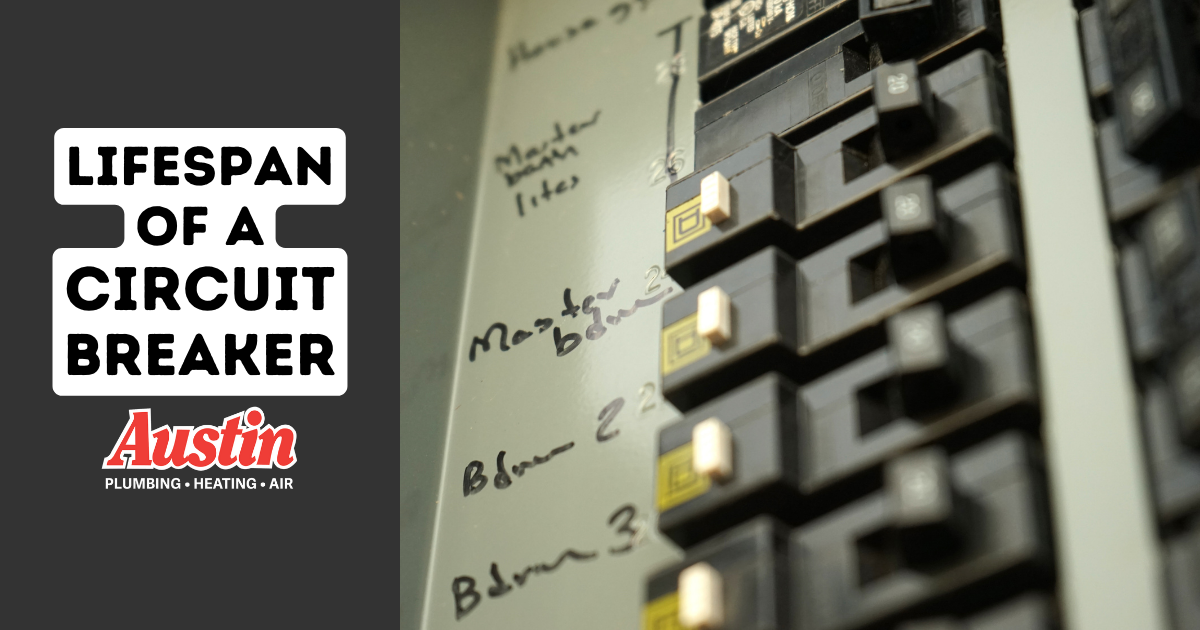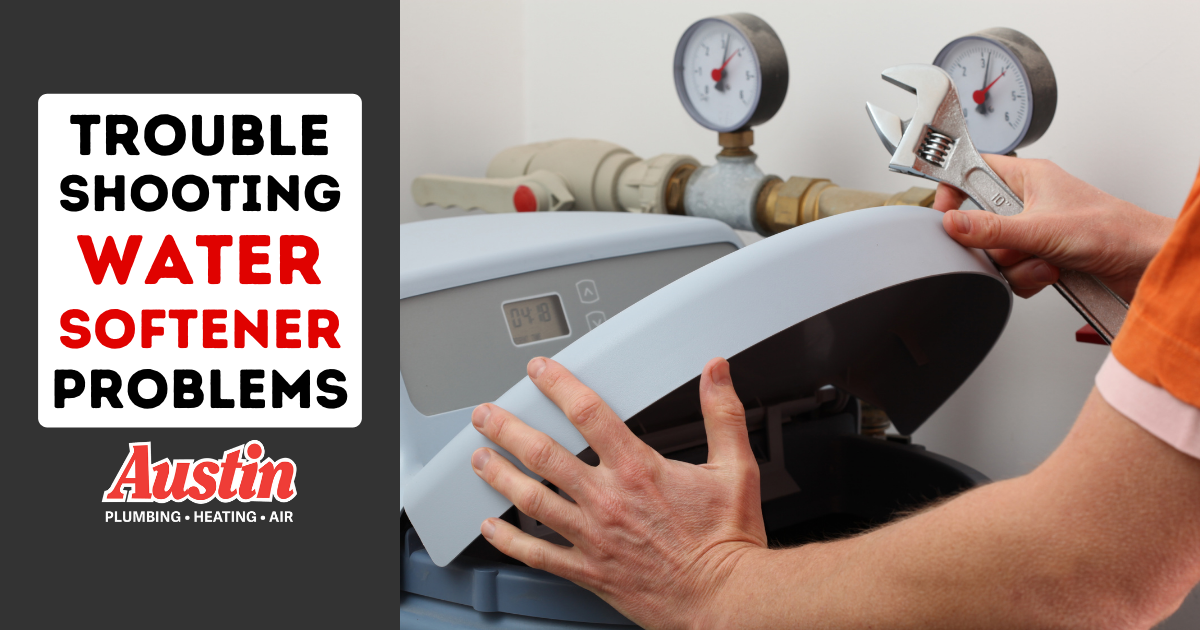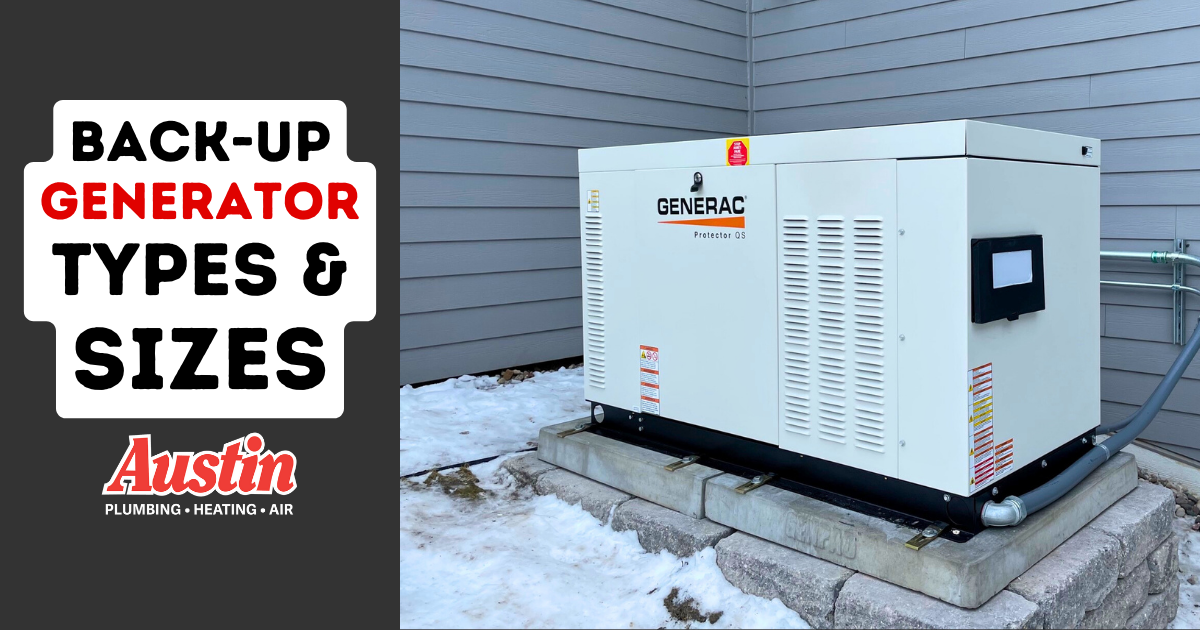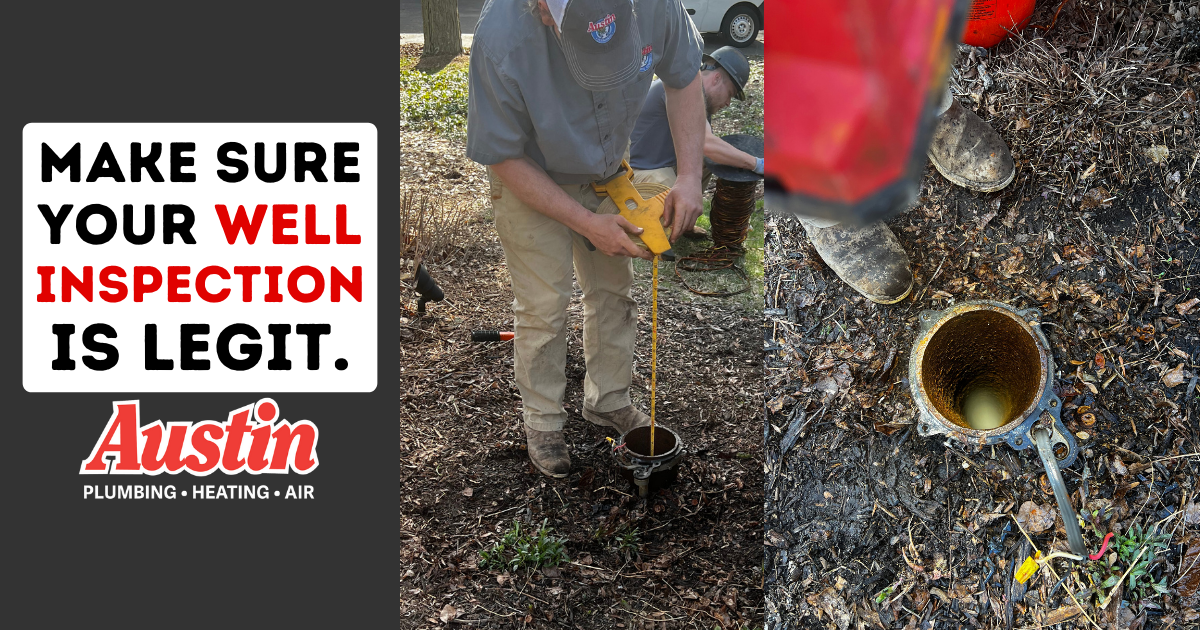Infographic: 11 Kinds of Furnace Leaks + How to Fix Them
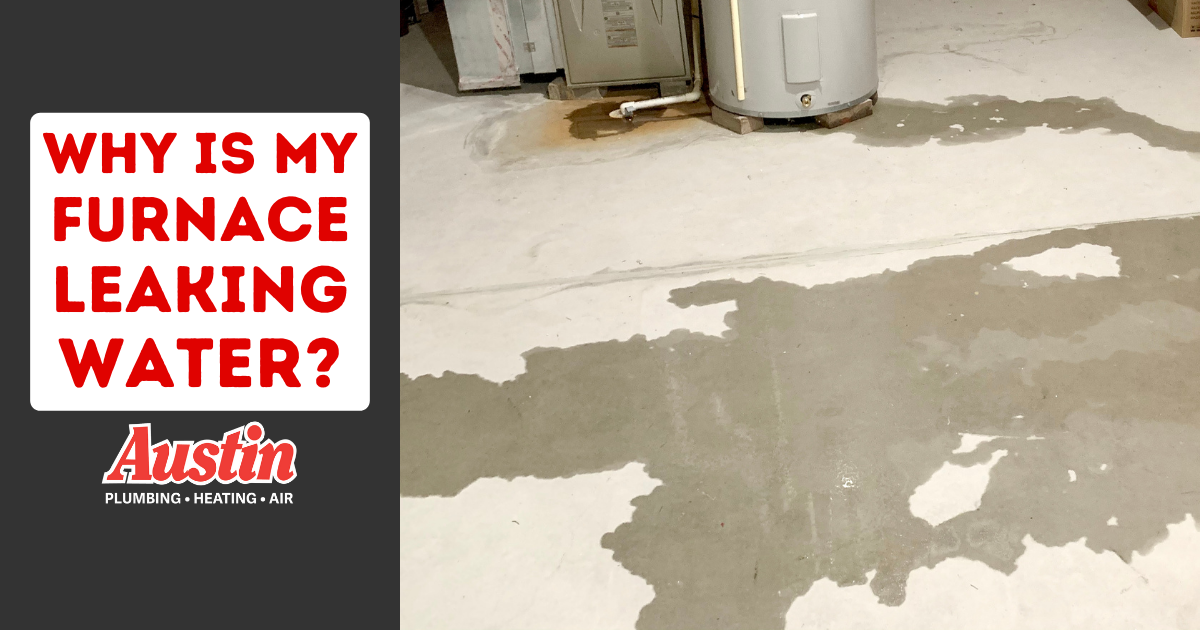
Our Master Tradesman walks you through the 11 most common causes of furnace leaks and how to fix them.
Water leaking or pooling around a furnace can be an alarming find, to say the least. Let’s unpack 11 possible reasons why even a high-efficiency furnace might be struggling to keep it together—and find out what to check before calling a professional repairman in to fix the leak.
Where does the water come from, anyway?
This is a great question! In most cases, the water that leaks from a high-efficiency furnace will be condensation created during the heating process or while pulling in cold-yet-humid air for combustion.
For natural-gas furnaces, carbon monoxide and water are both byproducts of the regular heating process. The water vapor is suspended in the exhaust, which cools down in the secondary heat exchanger. Finally, that vapor condenses and begins to make its way through the furnace’s long (and complicated) drain system. There’s a number of points at which that moisture can go astray.
Winter Furnace Leaks vs. Summer Furnace Leaks: Is There a Difference?
Really, a furnace is active during all seasons of the year. At times, it can appear to be the source of a nearby water leak even if that leak originates at your AC. And occasionally, it may even be both—which is why we were thorough about covering all possibilities in this guide.
Or it could be neither.
In Wisconsin homes, the furnace is usually located in the basement near several other appliances that can also spring leaks—think plumbing-related fixtures in particular.
Before fixating on your furnace, perform a basic process of elimination. Make sure the water isn’t coming from your…
- Water heater,
- Water softener,
- Iron filter, or
- Dehumidifier.
If you are able to rule out those items mentioned above, it’s time to move on and see what’s causing your furnace to leak. Keep the infographic below handy, or scroll down for the complete list plus troubleshooting steps.
1) The drain line is blocked.
By far the leading reason for furnace leaks is a plugged or backed-up drain hose. This external hose connects the furnace to the drain trap (more on this in a minute) and guides excess water to the floor drain. Over time without maintenance and cleaning, it can get plugged with dirt and debris, which is why annual tune-ups are so important. Seriously!
How to Fix a Clogged Furnace Drain:
Disconnect the drain hose from the furnace and flush it with hot water. If you’re not comfortable doing this yourself, Austin Plumbing, Heating & Air can just as easily replace the old one with a clean, new, vinyl drain hose or PVC/CPVC.
2) The condensate trap is clogged.
Inside your furnace is something called the condensate drain trap. This trap separates the condensation formed while the furnace is heating from the exhaust that is also flowing through the secondary heat exchanger, and aids in the overall operation of the exhaust system.
Inside a high efficiency furnace, most condensation occurs at the time when the exhaust gases are cooling in the secondary heat exchanger. This condensation flows out slowly via many small ports, allowing debris just enough time to deposit themselves in the drain trap and create a blockage. When enough water gets backed up inside the furnace, you might notice it starts to leak onto the floor.
How to Fix a Backed-Up Condensate Trap:
Since the drain trap will need to be removed from the furnace and thoroughly cleaned before re-installation, homeowners overwhelmingly choose to rely on a professional heating technician to handle this kind of problem.
3) The condensation pump has failed.
Some furnaces are unable to drain to a floor drain with only the help of gravity. These require a special pump designed to lift the condensation from within the furnace and transfer it to the drain system. This part of some furnaces is called a condensate (or condensation) pump. Without it, that condensation would have nowhere to go. If it fails, of course, you’ll end up with water all over the floor just the same.
How to Fix a Broken or Leaking Condensate Pump:
If you’ve been able to narrow down the cause of the leak to your furnace’s condensation pump, it’s probably going to need a professional repair or replacement. Additionally, Team Austin strongly recommends requesting a visual inspection of the drain lines for soundness.
4) The drain hose is worn or cracked.
Over time, the pipe and/or hose used to drain the condensation from the furnace can become brittle and aged. Getting stepped-on or having heavy objects placed on it can also result in a kinked, cracked, or crushed drain tube.
How to Fix a Split Furnace Drain:
Replacing a drain hose or drain pipe external to the furnace is actually a fairly straightforward process. However, if you’ve got a drain hose leaking inside your furnace, it’s a good idea to book an appointment. Pretty much no homeowner is going to have the OEM parts needed to deal with this, nor the time and expertise required to handle that much disassembly and reinstallation.
5) The furnace vent or intake pipe is split.
Water doesn’t leak upward, so we tend to keep our eyes fixed on the floor after noticing a furnace leak. But water pooling around the furnace should actually cause you to look up every now and again! The venting and intake pipe that leads from the furnace to the outdoors can be a sneaky culprit, but a common one. Condensation occurs here in both the intake and exhaust piping, which means a faulty connection or failed PVC joint can cause water to run out and spread across your basement in no-time flat.
How to Fix a Leaking Furnace Vent:
The fact is, repairing an exhaust vent pipe or intake pipe is a job reserved for qualified technicians, and for good reason. You can always call us to schedule a furnace repair appointment ASAP.
6) Rain or snow has gotten into the vent or intake pipes.
If you’re noticing the leaking furnace when it’s raining or snowing outside, don’t rule out water from a driving rain or snowfall making its way from outside into the furnace and then leaking back out. Sometimes it really is that simple!
What to do if rain or snow is getting drawn into the furnace vent or intake:
If this is happening during an ongoing weather event, your best bet (and only DIY option) is to clear the snow away from around the intake pipe. If you want a long-term solution, your best course of action is to schedule a visit with us so we can see about reconfiguring your furnace’s vent pipes to prevent this from happening in the future.
7) Condensation has started to form within the intake pipe.
The intake pipe from a furnace is used to draw outside air directly into the furnace during the heating season. This improves efficiency and overall cleanliness of the combustion process. In the summer, this pipe is still connected to the furnace—and in some cases the humidity and heat from summer air may result in condensation inside the actual intake pipe. When this happens, a small amount of water will inevitably run back into the furnace, eventually causing a kind of leak seen usually in the summer months.
How to Fix Intake Pipe Condensation Leaks:
Since the root cause of this issue lies in the furnace’s inability to handle excess water, your best bet is having a special fitting installed to catch and divert that water toward the furnace drain. This is a sure method to prevent future internal furnace leaks, and we’re usually able to make it happen the day you call.
8) The secondary heat exchanger is leaking.
We’d love to say we’re done talking about condensation, but…not quite yet.
The lionshare of the condensation and related clogging that can occur in a furnace’s drain system happens in the secondary heat exchanger. The water created during regular furnace operation is actually acidic and pretty corrosive. If left alone for too long, it will start to eat holes in the heat exchanger itself, causing a leak that can’t be repaired via DIY means.
How to Fix a Corroded Heat Exchanger Leak:
The diagnosis of a leaking secondary heat exchanger is neither simple nor cheap. Seriously, have a licensed heating technician out to perform a complete diagnostic analysis so that if this is the problem, you can actually proceed with getting it handled—sooner rather than later.
9) The furnace inducer motor is leaking.
Connected directly to the secondary heat exchanger collection box is the inducer motor (commonly called the exhaust motor). If water backs up in the secondary heat exchanger due to any of the previously mentioned drainage problems, it can also back up into the inducer motor. The end result is the same: a furnace leaking out onto the basement floor.
How to Fix a Leaky Inducer/Exhaust Motor:
The first step is to eliminate the drainage issue downstream of the inducer motor to see if that will stop water from leaking out of the motor or the housing itself. If that doesn’t fix the problem, then professional furnace repairs will be required, potentially including the replacement of your furnace exhaust motor.
10) Your humidifier is actually leaking.
If you have a humidification system, it’s running in the background at the same time as your heating system. Humidifiers pass water over an evaporator pad where warm air draws the water vapor into the airstream, increasing humidity in the home. This is unfortunately both a common source of leaks and an absolute necessity for many dry Wisconsin homes. The best thing you can do is learn to identify and troubleshoot it.
When Your “Furnace Leak” is Really a Humidifier Leak:
- Replace the humidifier pad.
- Pull, flush, and re-install the humidifier drain tube.
- Check to make sure the filter and filter rack are installed properly.
- Put the cover securely back in place.
- Put the humidifier in test mode and observe its operation.
11) It was your air conditioner all along.
In Wisconsin, the furnace sits right below the air conditioner. So if your furnace leak issues seem to pop up exclusively in the summer months, chances are you’re actually noticing leakage flow down from the AC atop the furnace.
AC Leaks that Often Disguise Themselves as Furnace Leaks:
- Plugged air conditioner drain lines
- Rusted or leaking evaporator coil pan
- Frozen AC evaporator coil
- Plugged furnace filter
You can learn more about air conditioner leaks in this guide.
Basement floor still wet? Furnace leak still unsolved?
The professionals at Austin Plumbing, Heating & Air have been serving Southeast Wisconsin for about nine decades strong. From leaking furnaces to all manner of HVAC system repairs, clients trust Austin because of our commitment to honesty, integrity, and craftsmanship! For a speedy visit from an expert heating tech, call 262-367-3808 today.

